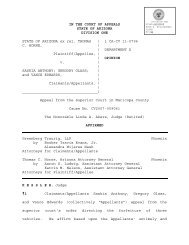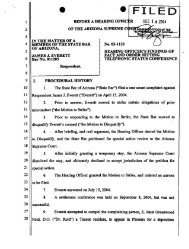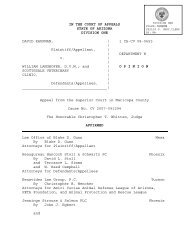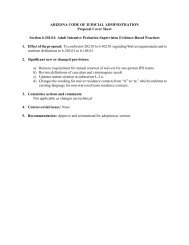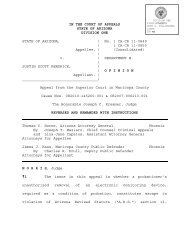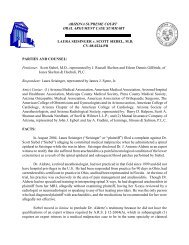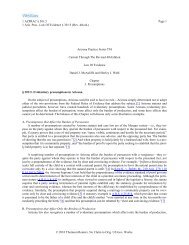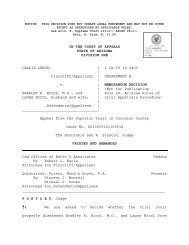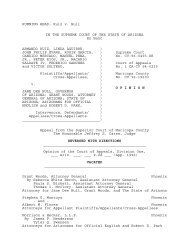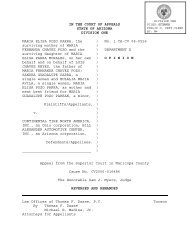Print Version - Arizona Judicial Department
Print Version - Arizona Judicial Department
Print Version - Arizona Judicial Department
Create successful ePaper yourself
Turn your PDF publications into a flip-book with our unique Google optimized e-Paper software.
PROJECT DESCRIPTION<br />
In our increasingly interconnected world, business, including the business of<br />
government, comes to a standstill without the flow of electronic information. When court<br />
data systems or the network that connects them are damaged and processes disrupted,<br />
the problem is serious and the impact far reaching. Mistakes lead to public distrust and<br />
the erosion of public confidence in the institutions of government. The consequences<br />
can be much more than an inconvenience, even affecting life, health, and public safety.<br />
Vital digital records must not only be preserved but have at least the same assurance of<br />
availability as paper records were perceived to have.<br />
Disaster recovery has always been an issue for courts but it is becoming pervasive as<br />
courts increase their reliance on automated systems and electronic documents.<br />
Integration also makes an outage in a single court potentially disruptive to their partners<br />
throughout the justice system. Fixing a single site, like the data center at the State<br />
Courts Building, only addresses a piece of the overall problem, since more of the<br />
environment is being distributed among the local courts. Local courts must develop and<br />
communicate their own detailed plans.<br />
A prime example of the risk related to decentralization is in the arena of electronic<br />
document management. With the implementation of EDMS in all superior court clerks’<br />
offices throughout the state, courts are poised to stop collecting paper in the near term<br />
in favor of electronic case filing. Even in the current environment where clerks digitize<br />
the paper they receive, court processes are becoming dependent on the electronic<br />
records. The majority of rural superior courts had to stretch financially to afford a single<br />
EDMS server; purchasing a secondary or redundant system is well out of their reach.<br />
Courts are not prepared to quickly rebuild servers and get data restored even where<br />
reliable backups exist. As limited jurisdiction courts now undertake digitization efforts<br />
on even lower budgets with fewer support staff, the problems are magnified.<br />
ACJA 1-507 contains provisions for courts desiring to destroy paper for which<br />
equivalent electronic records exist; unfortunately, few courts are able to meet the<br />
associated technical requirements, even for closed records. The AOC has constructed<br />
a solution that replicates electronic records from the state-standard EDMS to a central<br />
location. For limited jurisdiction courts that cannot afford a local EDMS, AOC has also<br />
constructed a central EDMS for shared use. Both solutions increase the survivability of<br />
electronic court records by storing multiple copies in separate geographic locations.<br />
Courts using the AOC’s central EDMS or replication solution are being given<br />
authorization to destroy paper, since the AOC systems fulfill the technical requirements<br />
of ACJA 1-507.<br />
Interestingly, a recent study revealed that natural or man-made disasters were actually<br />
the least likely cause of system downtime. The wealth of other more mundane<br />
contributors to outages includes user errors, application errors, hardware failure, utility<br />
outages, and fiber cuts. There is quantifiable risk associated with each of these<br />
conditions, defined as the probability of occurrence multiplied by the magnitude of<br />
ARIZONA JUDICIAL BRANCH | INFORMATION TECHNOLOGY STRATEGIC PLAN: 2013-2015 116




